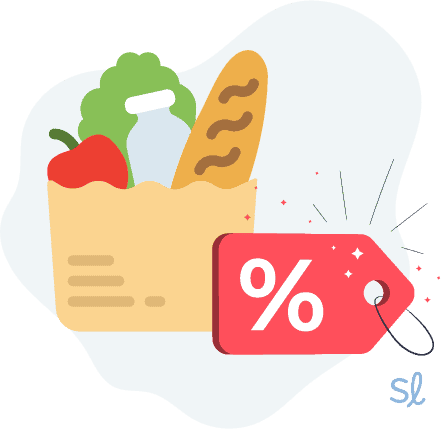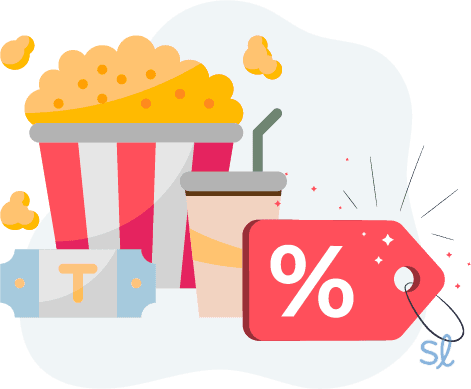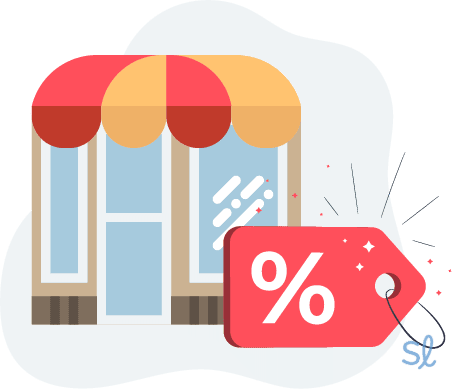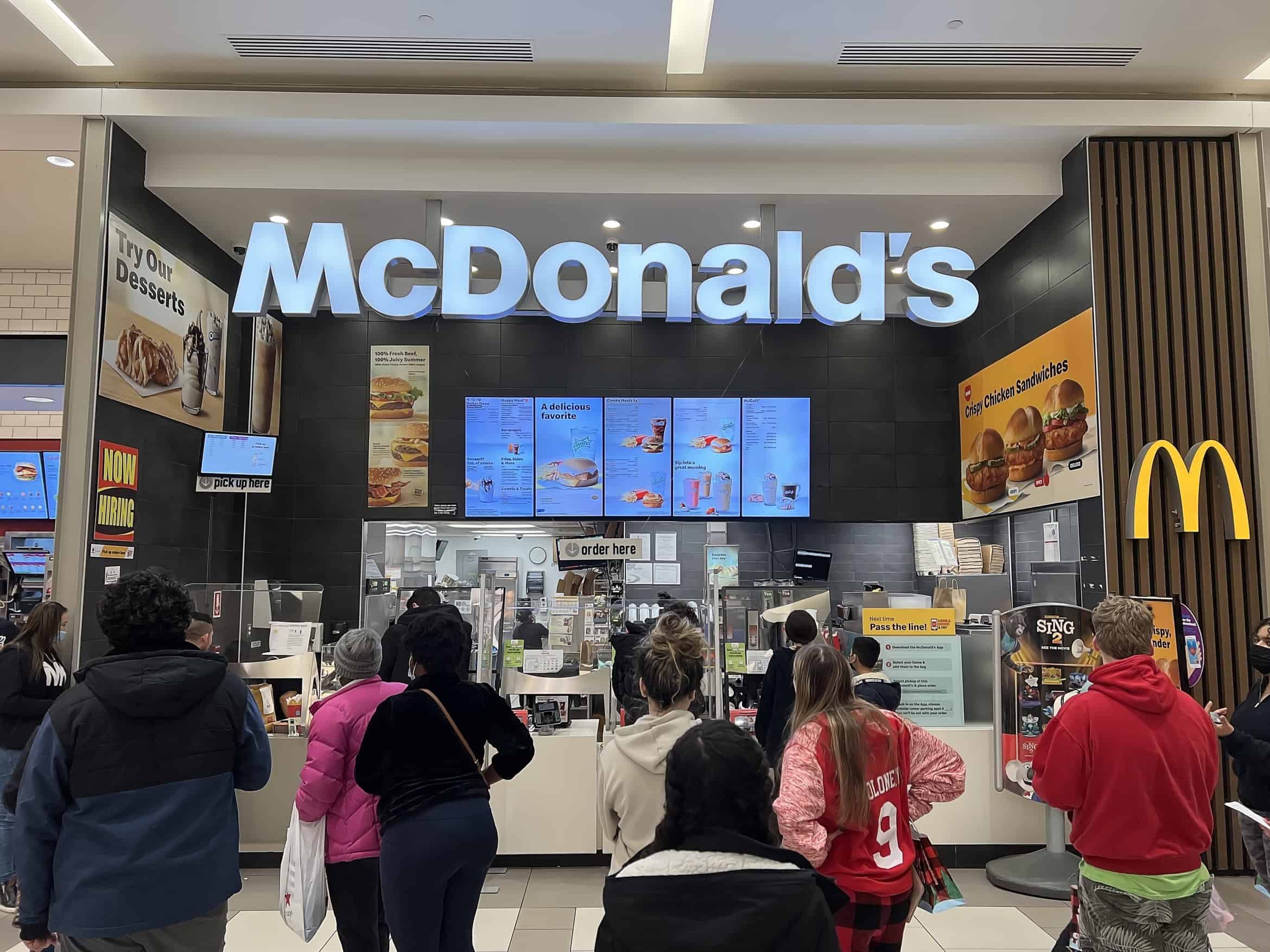Senior Discounts in 2025
There are senior discounts for everything, from retail and restaurants to travel and leisure activities.
SeniorLiving.org is supported by commissions from providers listed on our site. Read our Editorial Guidelines

Many businesses offer exclusive discounts to customers over a specific age. You may be surprised that some senior discounts are available long before you turn 65, as not all companies classify senior citizens similarly. Of course, many stores also offer rewards programs for individuals of all ages. We’ll cover a few of those, as well. You’re never too young to start saving!
Ready to start saving on your favorite leisure activities, restaurants, grocery stores, and more? Our research team has compiled over 100 senior discounts to enjoy.
- Retail Senior Discounts
- Grocery Senior Discounts
- Restaurant Senior Discounts
- Leisure Activity Senior Discounts
- Cruises Senior Discounts
- Hotel and Rental Car Senior Discounts
- Air, Bus, and Rail Senior Discounts
- Internet Service and Communications Senior Discounts
- Major Life Expenses Senior Discounts
FYI: Want to know what’s even better than a discount? Scoring your favorite goods and services for free! Our guide to 13 things free for seniors covers all the freebies you didn’t know about.
Table of Contents
What Are Senior Discounts?
Senior discounts are a fantastic way to maintain your budget and enjoy the benefits of being an older adult. Remember that there is no legal requirement to offer discounts to seniors, so it pays to ask before purchasing. Any discount could exist, even those from your imagination.
Many of the discounts below require an AARP membership. Not an AARP member? You’re missing out on huge savings. Check out our AARP membership guide to learn how to get started.
Get discounts nationwide with an AARP membership. Sign up for only $15 per year for a limited time.

How Old Do You Have to Be to Receive a Senior Discount?
While 65 is the age to officially claim Medicare, many senior perks and discounts begin much earlier! If you enroll in an AARP or Association of Mature American Citizens (AMAC) membership on your 50th birthday, you’ll have a head start on cashing in on senior discounts. For all other discounts, the minimum age requirements vary, depending on the company or location, and can range from 50 to 65 years.
Unsure if you qualify for a senior discount? Don’t hesitate to ask! Not all businesses advertise discounts for older adults. Some detective work might be required.
Popular Types of Senior Discounts
From retail and grocery to insurance and healthcare, there are all types of senior discounts to claim. Maximize your savings and make the most of your purchases (large or small) by cashing in on the following discounts. Watch the video below with SeniorLiving.org Editor-in-Chief Jeff Hoyt to learn more about the best senior discounts.
Retail Shopping Senior Discounts
Kick your retail savings up a notch! While not all retail stores provide a dedicated senior discount, many offer impressive savings with a store rewards card or other perks.
| Retailer | Discount | In-store or online | Eligibility | Discount availability |
|---|---|---|---|---|
| Amazon Prime | 50% off Prime membership | Online | Must be a qualifying government assistance recipient, including SSI and SNAP | Every day |
| Bealls Rewards | $5 reward for every $100 spent; 20% off birthday reward | In-store | No age requirement | Every day |
| CVS ExtraCare | Earn 2% back in ExtraBucks Rewards every time you use your ExtraCare card | In-store or online | CVS ExtraCare card member | Every day |
| CVS Veterans Advantage | 20% off your purchase | Online | VetRewards member | Every day |
| Home Depot | Price match guarantee | In-store or online | No age requirement | Every day |
| Goodwill Senior Savings Day | 10% off your purchase | In-store | 60+ years | Tuesdays |
| JOANN Senior Discount Day | 20% off your purchase | In-store | 55+ years; must present a state-issued photo ID for proof of age upon checkout to receive discount | Check your local JOANN store for their senior day schedule |
| Kohl's | 15% off your purchase | In-store | 60+ years; must present a state-issued photo ID, which is required at checkout | Wednesdays |
| Lowe's Military Program | 10% off your purchase | In-store and online | Military veterans must first enroll online; valid photo ID required at checkout | Every day |
| Ross Dress for Less 55+ Program | 10% off your purchase | In-store | 55+ years; must provide a photo ID at checkout | Tuesdays |
| Michaels | 10% off your purchase | In-Store and Online | 55+ years; Must create a Michaels Rewards account | Every day |
| Red, White, and Blue Thrift Stores Senior Citizen Day | 50% off your purchase | In-store | 55+ years | Wednesdays |
| Rite Aid Rewards 65+ | Earn 5x points, in-store purchases that day. Free pharmacist consultation to review medications, immunization needs, blood pressure screening, and Medicare Part D questions | In-store | 65+ years; must enroll in-store for the wellness65+ and be a wellness+ member | First Wednesday of each month |
| Savers | Percentage varies by store location | In-store | 55+ years | Tuesdays |
| Tanger Outlets | Free Tanger coupon book with up to $1,000 in savings | In-store | AARP member | Every day |
| Walgreens Seniors Day | 20% off eligible items and cash rewards | In-store and online | 55+ years or an AARP member; must create a myWalgreens account | Check your local Walgreens for their senior day schedule |
Did You Know? Savings.com is a terrific resource to snag thousands of coupons and promo codes. Sign up for free and save money when you shop at your favorite online stores. From food and restaurant coupons to clothing and health and medicine coupons (and everything in between), Savings.com has savvy shoppers covered!
Grocery Store Senior Discounts

| Grocery store | Discount | Eligibility | Discount availability |
|---|---|---|---|
| ACME Markets | Savings each week in coupons and deals; earn points, and redeem rewards for discounts on gas or groceries | just for U reward card member | Every day |
| Albertsons | Savings each week in coupons and deals; earn points, and redeem rewards for discounts on gas or groceries | just for U reward card member | Every day |
| Food Lion | Receive personalized savings and ways to earn rewards each month | Shop & Earn MVP Monthly Rewards card member | Every day |
| Fred Meyer | Save 10% on select items | 55+ years | First Tuesday of the month |
| Kroger | Save with coupons and special promos; earn cash back, fuel points, and community rewards | Shopper's card member | Every day |
| New Seasons Markets | Seniors save 10% on most items on Wednesdays; Veterans save 10% on most items on Tuesdays | 65+ years for Wednesday discounts; Must be a veteran for Tuesday discounts | Every Tuesday and Wednesday |
| Publix | Savings each week with coupons and deals | Club Publix reward card member | Every day |
| Safeway | Savings each week in coupons and deals; Earn points and redeem rewards for discounts on gas or groceries | just for U reward card member | Every day |
Did You Know? Don’t be shy! Before you hit the aisles, stop by the customer service desk to ask if they offer a senior discount or special price reduction. Don’t forget your ID for proof of age.
Restaurant Senior Discounts
One of the easiest places to get a senior discount is at your favorite restaurant, coffee shop, or diner. Be sure to ask if there’s a senior menu or an early dinner discount. Many chain restaurants are owned independently. Therefore, discounts or promotions will vary by location.
The great news is, even if a restaurant doesn’t offer a senior discount, there are still savings to find! For example, Chili’s, Red Lobster, Tim Hortons, and Panera Bread offer free membership rewards programs to all customers. You can earn free food and discounted meals.
| Restaurant | Discount | Eligibility |
|---|---|---|
| Bubba Gump Shrimp Co. | Save 10% on food and nonalcoholic beverages | Present AARP card at checkout |
| Bonefish Grill | Save 10% on food and nonalcoholic beverages | Present AARP card at checkout |
| Bruster's | $5 in rewards for every 50 points earned through purchases | Bruster’s Sweet Rewards membership |
| Carrabba's Italian Grill | Save 10% on food and nonalcoholic beverages | Present AARP card at checkout |
| Chart House | Save 10% on food and nonalcoholic beverages | Present AARP card at checkout |
| Corner Bakery Cafe | Save 10% off your check | Present AARP card at checkout |
| Denny's | Save 15% off your check; dine from Denny's 55+ menu | Present AARP card to save 15%; 55+ years for the senior menu |
| El Pollo Loco | Save 10% (up to $1) | 60+ years |
| IHOP | Dine from IHOP's 55+ menu | 55+ years |
| Joe's Crab Shack | Save 10% on food and nonalcoholic beverages | Present AARP card at checkout |
| Landry's Seafood | Save 10% on food and nonalcoholic beverages | Present AARP card at checkout |
| Landry's Inc. Restaurants | Save 10% on food and nonalcoholic beverages | Present AARP card at checkout |
| Luby's | Senior Luann Special $7.99 – 3 p.m. to close | No requirements |
| McCormick & Schmick's | Save 10% on food and nonalcoholic beverages | Present AARP card at checkout |
| McDonald's | Discounted or free coffee at participating locations* | 55+ years |
| Perkins | Dine from Perkins’ 55+ menu at participating locations* | 55+ years |
| Outback Steakhouse | Save 10% on food and nonalcoholic beverages | Present AARP card at checkout |
| Rainforest Cafe | Save 10% on food and nonalcoholic beverages | Present AARP card at checkout |
| Saltgrass Steak House | Save 10% on food and nonalcoholic beverages | Present AARP card at checkout |
| The Oceanaire Seafood Room | Save 10% on food and nonalcoholic beverages | Present AARP card at checkout |
* You may need to call a location in your area to inquire about discounts, as they are only available at select locations.
Leisure Activity Senior Discounts

| Company | Discount | Eligibility | Discount availability |
|---|---|---|---|
| AMC Theatres | Discounted movie tickets at select locations | 60+ years | Every day |
| Ancestry | Save 30% on a World Explorer or All Access membership for the first year | AARP member | Every day |
| Cinemark Theatres | Discounted movie ticket for Senior's Day and the Early Bird special | 62+ years for Senior's Day | Contact your local theater for their designated Senior's Day |
| Marcus Theatres and Movie Tavern | Young at Heart special: $6.00 for any show that starts before 5:30 p.m. | 60+ years | Every Friday |
| National Parks America the Beautiful Senior Pass | $80 lifetime park pass provides admittance to more than 2,000 recreation sites | 62+ years; must provide proof of age and residency or citizenship. A $10 fee applies to passes bought online or by mail | Every day |
| Regal Cinemas AARP Movie Tickets | Save up to 20% on Regal ePremiere tickets purchased online | AARP member | Every day |
| Regal Cinemas Senior Citizen Movie Tickets | Discounted movie tickets at select locations | 60+ years | Every day |
| Regal Cinemas Concession | $3 off popcorn and soda combo | AARP members and Regal Crown Club members. Must present both cards at the time of purchase | Every day |
| SilverSneakers | Free healthy living and fitness classes at over 17,000 fitness locations | 65+ years and a member of select Medicare or other health plans | Every day |
| Showcase Cinemas | Discount admission at select theaters; popcorn and soda for $4.50 | 60+ years | Every Wednesday |
Did You Know? Museums, zoos, parks, and historical locales are all top spots to snag senior discounts.
Cruises Senior Discounts
We all need a vacation (even if you’re living in your dream beachfront retirement community), and cruising is a fantastic way to see the world. Cruises are incredibly inclusive, offering accessible cruising for guests with disabilities, medical conditions, or special needs.
| Cruise company | Discount | Eligibility |
|---|---|---|
| AARP Travel Center Powered by Expedia | Up to $100 in extra onboard cruise credits on more than 15 cruise lines. | AARP member |
| Carnival Cruises | Exclusive savings for seniors | 55+ years |
| Collette Cruise Tours | Combine two cruise tours and save up to $300 per person on your second tour and subsequent tours. | AARP member |
| Grand European Travel | Offers a variety of discounts throughout the year. You can currently save up to 15% on worldwide tours. | AARP member |
| Royal Caribbean | Exclusive senior pricing on selected sailings | 55+ years |
| Vacations By Rail | Save up to $500 on more than 40 rail and cruise vacations | AARP member |
Hotel and Rental Car Senior Discounts
Planning a getaway? Take advantage of unique and discounted hotel and car rental rates. Contact customer service before booking if you don’t find the senior (or AARP) rate on the hotel or rental car website. AARP offers discounts for over 50 hotels and resorts. Below is a sample of discounts starting at age 50 and up.
| Hotel or rental car | Discount | Eligibility |
|---|---|---|
| Avis Rent a Car | Save up to 30% off Avis' base rates, plus get an upgrade on compact through full-size car class bookings | AARP member |
| Budget Rent a Car | Save up to 35% off Budget's base rates, plus get an upgrade on compact through full-size car class bookings | AARP member |
| Budget Truck Rental | Save 10% to 20% on truck rentals | AARP member |
| Best Western Hotels & Resorts | Save 5% to 15% at over 4,000 hotels worldwide | AARP member |
| Cambria Hotels | Save up to 10% off the best available rate | AARP member |
| Choice Hotels | Save 10% on advance reservations | 60+ years or an AARP member |
| Hertz | Save up to 20% off Hertz's base rates with the Fifty Plus Program | 50+ years |
| IHG Hotels & Resorts | Save with IHG's Senior Discount Rate program | 62+ years |
| Marriott | Offers a senior discount rate at participating locations | 62+ years |
| Payless Car Rental | Save 5% on leisure daily, weekly, weekend, and monthly base rates, plus get a free upgrade on compact through full-size car class bookings | AARP member |
| Thrifty Car Rental | Join the Silver Thrifty Club and save 5% | 50+ years |
| Wyndham Hotels | Save 10% off Wyndham's best available rate | AARP member |
| Zipcar | $40 for an annual Zipcar membership, plus $40 in free driving credit | AARP member |
Air, Bus, and Rail Senior Discounts
Hop on the bus, Gus! Most public transportation (local and regional), including bus, subway, train, and ferry services, offers a senior fare. Not all airlines have senior-reduced fares. They may only promote them online, so call customer service before locking in your flight plans. Regardless of the type of transportation you plan to use, ask for a senior discount!
| Transportation | Discount | Eligibility |
|---|---|---|
| Amtrak | Save 10% on most rail fares on most Amtrak trains | 65+ years |
| British Airways | Save $65 off World Traveller (economy) and World Traveller Plus (premium economy) or $200 off Club World (business class) fares when you purchase round-trip transatlantic tickets online to over 130 destinations | AARP member |
| Delta Airlines | Senior discounts are available for limited itineraries | Call Delta’s customer care at (800) 221-1212 to find out if your flight is eligible for the discounted fare |
| United Airlines | Save on senior fares to select travel destinations | 65+ years |
Pro Tip: Don’t forget to make the most of your flight by signing up for airline miles or use a travel credit card to earn points.
Internet Service and Communications Senior Discounts
Many internet providers recognize seniors as one of the fastest-growing segments of new internet users. Check out our guide to the best internet service for seniors to learn which companies lead the pack with pricing and discounts. There are also affordable internet plans for those on fixed or low incomes.
Several cell phone plans include incentives and discounts for older adults. Compare these cellular plans to see which best meets your budget and lifestyle needs.
- AT&T: AT&T senior plans start at $60 per month (single line only) or $80 per month for two lines ($40 per line). AT&T’s 55+ plan is restricted to Florida residents only.
- Consumer Cellular: Consumer Cellular’s Unlimited Talk with Text and Data plan starts at $20 monthly for 1 GB of data. Consumer Cellular also offers discounts to AARP members, including a five percent discount on monthly service and usage charges and 30 percent off accessories.
- Lively: Lively's phone plans have some of the best no-contract prices for older adults. They also (arguably) have the best senior-friendly phones on the market. AARP members can now save $60 per year on select plans.
- Verizon: The Verizon 55+ Unlimited Plan offers unlimited calls, texts, and data for $60 a month (single line only) or $80 per month for two lines ($40 per line). The Verizon 55+ plan is only available to senior residents in Florida.
- T-Mobile: Adults ages 55 and over have three Unlimited 55+ plans to choose from with unlimited talk, text, and smartphone data: the Essentials (starting at $27.50 per line), the Magenta (starting at $35 per line), and the Magenta MAX (starting at $45 per line). T-Mobile’s 55+ plans are available in all 50 states, Washington, D.C., and Puerto Rico.
Senior Discounts for Major Life Expenses
Our discount list wouldn’t be complete without diving deeper into the benefits of AARP, the leading senior savings program. From vehicle and property insurance to hearing, optical, and pharmacy savings, AARP’s membership helps save on major expenses.
AARP Health and Wellness Senior Discounts
- CareLinx In-Home Care
- Health savings account offered by Optum Bank
- Hearing care program provided by HearUSA
- HearUSA Hearing Shop
- Kroger Co. Pharmacy
- LensCrafters
- MyVision Care provided through EyeMed
- Prescription discounts provided by OptumRx
- Short-term care insurance from Medico
- Target Optical
- Vision discounts provided by EyeMed
- Walgreens Pharmacy
- Walmart Pharmacy
AARP Vehicle and Property Insurance Senior Discounts
- Auto insurance program from The Hartford
- Homeowners insurance program from The Hartford
Other Health-Related Discounts
Taking care of your health doesn’t have to break the bank. In addition to the AARP discounts listed above, check out the resources below for additional ways to save on health-related expenses.








